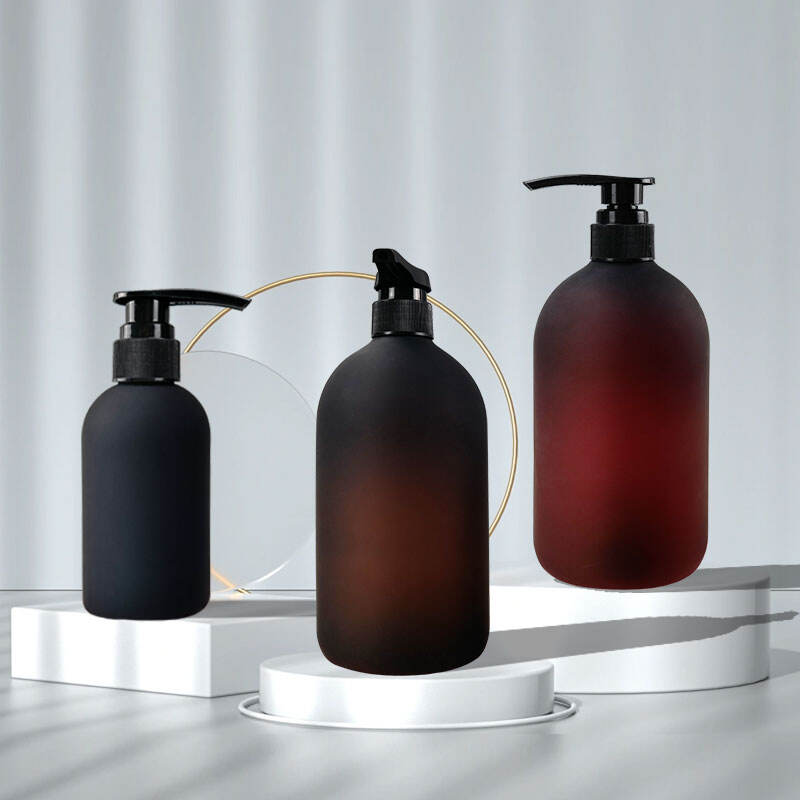As a supplier with 20 years of experience in custom plastic packaging, Zhenghao can responsibly say that in the world of packaging, the first impression is everything. Packaging is the forerunner of a product. The primary packaging concept conveys the quality of the product through visual perception, while the advanced packaging concept conveys the quality, luxury, and even sustainability of the bottle or can through touch. The sense of touch offers greater reliability than the sense of sight, especially for cosmetic, skin care, food and personal care brands. The surface treatment of plastic packaging has become a powerful design tool for enhancing brand image and customer experience.
Common surface treatments - such as matte finishes, matte coatings or soft touch textures - in this article, we will explore how these finishes work, their technical advantages, and the marketing benefits they bring to modern brands.
Why is surface texture important
When consumers pick up the product, the texture of the container immediately conveys information. Smooth and glossy PET bottles can convey freshness and purity - ideal for beverages or minimalist skincare series. In contrast, matte or frosted surfaces convey a soft, delicate and high-quality quality.
This sensory connection is called tactile marketing - using touch to influence perception. Research shows that consumers subconsciously associate soft, velvety textures with tenderness and trustwor thiness. In industries such as beauty and health, this can directly affect the purchase intention.
By customizing surface treatments, brands can transform ordinary plastic bottles into an unforgettable tactile experience, strengthening the emotional connection with consumers.
Surface treatment - frosted
The frosted effect, often referred to as "bite" or "chemical etching" in scientific terms, is mainly achieved by treating the surface of the mold. It is not a coating added later. Instead, during the mold manufacturing process, chemical solutions were used to corrode the surface of the cavity, creating tiny, irregular concave and convex textures. When the plastic melt is injected into this treated mold, it replicates these textures, thus creating the frosted feel we perceive on the surface of the finished product and giving the plastic container a semi-transparent glass-like appearance. This technology softens light reflection, creating a high-quality and natural aesthetic that has attracted high-end skincare and essential oil brands.
The benefits of frosted plastic bottles and cans include:
1. Luxurious appearance and touch: No fragility like glass and lower cost
2. Enhance brand differentiation: Especially in the crowded cosmetics packaging market, special surface processes can enhance brand luxury.
3. Reduce the visibility of fingerprints or stains: Frosted bottles will not have their surfaces covered with the texture of fingerprints due to touch
4. Sustainable options: Made from recyclable materials such as PET or PP.
5. Cost-effectiveness: As it is completed in one go during mold forming without the need for subsequent processing, it has a cost advantage in mass production
Surface treatment -soft touch
Another increasingly popular surface treatment is the soft-touch coating, sometimes referred to as "rubber paint" or "tactile paint", which is a later-added coating process. After the plastic soft touch bottles/jars are produced, a special resin coating based on polyurethane is applied to their surface by spraying or laminating. Then, the product needs to be baked to cure the coating. This soft film endows the plastic surface with that unique, skin-like smooth and soft touch.
The main advantages of the soft-touch finish
Ultimate touch: It can offer a softer and smoother touch experience than matte, with a warm and moist feeling, which is something that the matte process cannot directly achieve.
Enhancing user experience: Consumers believe that the product quality is higher and they enjoy using it more.
Brand recognition: The unique tactile recognition makes your packaging immediately recognizable.
Durability: The coating enhances scratch resistance and adds a protective layer against wear.
Potential limitations: As a surface coating, its durability depends on the quality of the coating and there is a risk of it being scratched off under extreme conditions. The process involves more steps and the cost is usually higher than that of sandblasting.
The Future of the "Feel" of Plastic Packaging
As consumers increasingly seek multi-sensory product experiences, haptic design is becoming a key differentiating factor in packaging innovation. Through our observation, the number of customers requiring custom surface finishes has grown from 25% last year to 40%. Brands investing in surface customization, especially tactile finishes that blend comfort, elegance and sustainability, will be in both e-commerce and retail environments
By transforming a simple plastic surface into an emotional and sensory experience, you are not merely selling a product - you are shaping perception, loyalty and trust.